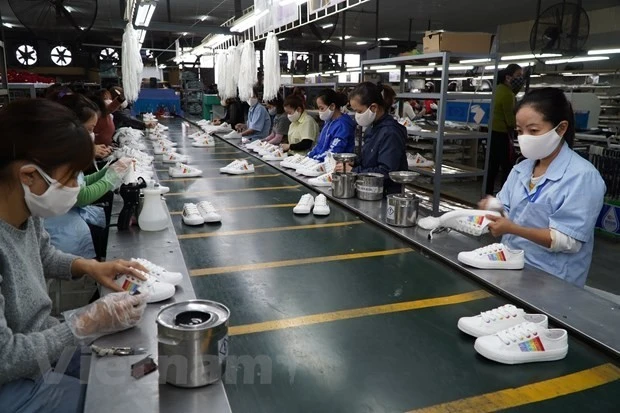
Hanoi (VNA) - In the first 6 months of 2024, the index of industrial production (IIP) increased by 7.7% over the same period last year, according to a report from the Ministry of Industry and Trade.
The processing and manufacturing industry expanded by 8.5%, electricity production and distribution by 13%, and only mining reported a decrease of 5.5%.
Notably, industrial production grew on a large scale with 56/63 provinces and centrally-run cities posting an increase in the index of industrial production compared to the same period last year.

Pham Tuan Anh, Deputy Director of the Department of Industry, attributed the results to the synchronous implementation of solutions to support businesses, promote investment in key projects, attract FDI, and expand production.
The Government, ministries, sectors, and localities have accompanied businesses to make good use of opportunities brought by free trade agreements (FTAs) that Vietnam signed amidst the world market’s recovery.
Furthermore, outstanding results in economic diplomacy, especially with Vietnam's major trading partners, such as the US, China, and the Republic of Korea, have helped strengthen the confidence of investors and businesses.
Facts show that business capacity, especially domestic firms, has been improved thanks to the combined impact of the Government’s support policies. These are new positive signals as domestic business export growth doubles that of FDI enterprises, and confidence is reinforced thanks to the stable domestic macroeconomic environment and the recovery trend of the world market.

Regarding solutions to industrial development of the trade and industry sector in the coming time, he reiterated that despite achieving positive growth results over the past six months, Vietnam's industry still faces many challenges in both the short and long terms.
According to the official, the internal strength of domestic manufacturing industries is still weak. Major industrial bottlenecks in recent times have yet to be overcome effectively. Production still depends heavily on external factors, especially on the FDI sector. The added value of domestic industries is still low. Supporting industries have received attention, but they have not developed as expected, and most domestic industrial products have low technology content.
Industrial production has yet to fully recover. In the first six months of this year, 7 out of the 63 localities reported a decrease in the index of industrial production. A drop was seen in some key manufacturing industries such as smartphones, televisions, cars, iron, and steel. Several key export items, such as shoes, wood, and all kinds of phones and components have yet to return to their peak compared to the same period in 2022.
Import and export activities continue to depend on several markets, products, and FDI areas, he said, adding that several products exported to the EU and the US continue to face pressure from trade defense measures and technical barriers.
Domestically, although the real estate market has recovered, it is still quite slow. The domestic market's growth is lower than in the same period last year, so many synchronous, long-term, and solid solutions are needed to ensure stable and sustainable growth for industries.
He said there are four main groups of solutions, including the business support policies approved by the Government to remove obstacles in business production. There is also the promotion of new industrial production projects to serve export and domestic consumption, creating more capacity for production development and sources of goods for export.
The Ministry of Industry and Trade will focus on advising and improving institutions, legal policies, and development strategies for several foundational industries. A priority will be given to new growth resources for industries for both short and long-term prospects.
The Government continues to promote working programmes with localities and support existing businesses to step up industrial growth momentum in key economic regions. It also continues to support businesses to take advantage of opportunities from large public investment projects and Government policies to help the real estate market recover, encourage domestic procurement, and promote the search for new markets and key export industries, such as textiles, footwear, and electronics./.



















